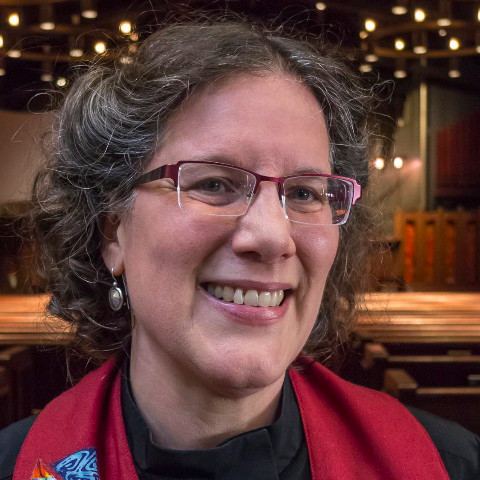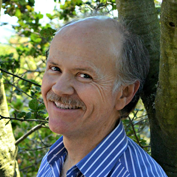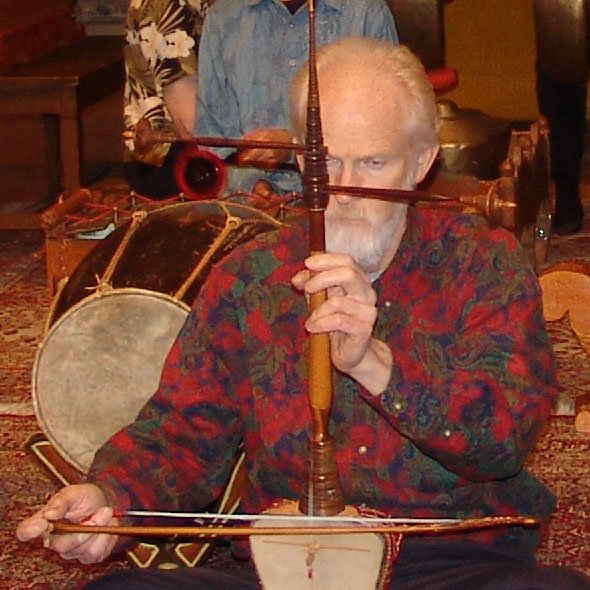{podcast_episode 195}
I wanted him dead. Throwing him off my second story porch would have been too good for him. I wanted to kill him. And not just that. I wanted to kill all his relatives too.
It was, admittedly, a very drastic response. Reflexive. Sudden. And very certain. But what made it all the more compelling is that I held not a doubt that he thought about me in exactly the same way. And then, as we were only inches away from one another, he moved one arm ever so slightly. And I screamed.
It was the third time in less than a minute I had done that. I was 35 at the time and ‘hysterical screamer’ was not the moniker I was going for. Which only served to increase my certainty, I wanted him dead. Me and my arachnid housemate were not going to see eye to beady little eye.
Let me back up and describe my world before that minute began so you will know how fear operates.
I had just been called to the church in Atlanta and had been moving in to a new apartment. It was a hot summer afternoon and I had been carrying boxes up the stairs for hours. My apartment overlooked the pool. So I decided to fix a glass of sweet tea and take a break on the balcony. Carrying a folding chair and my glass, I opened the screen door, waved to the dozen or so people 30 ft away at the pool, took two more steps onto the balcony and walked – face first – into the mother of all spider webs. In the cataclysmic, claustrophobic, suffocating sensation that followed, I panicked. The chair and the tea went flying. I began furiously flailing my arms in the air trying to rip this dirty sticky web goo from my face. Which – after I got it out of my eyes and mouth – is what brought on the first – involuntary – scream.
Now on the ground, my brain shifted from involuntary response to voluntary thought. And the first question that entered my brain was, ‘Wow, a web that big must have been made by a pretty big spider.” Whereupon a spider of nightmarish proportions scurried up the web right past my face. This, of course, sent my panic level from orange to red compelling me to scramble backward toward the wall. But since the web line holding the spider was still attached partially to my face, I ended up just pulling him closer. Hence, the second scream.
At this point, dangling about 10 inches from my face – we were in a stare-down – and all it took was the slightest twitch from him – to send me out of my mind and into scream number three.
It was at this point that all the mothers around the pool began gathering their children and hurrying them to the exits on the far end of the complex away from my apartment.
That’s fear. That’s how it works. That’s how it spreads. That’s how it enters into and changes our lives. That quickly.
How many of us can identify with some part of that story?
Maybe you’ve had bouts with spiders or webs yourselves. Or maybe you’ve been one of those parents who pulled your children back when you saw a strange, screaming man flailing off invisible attackers. Or maybe, knowing he’s a minister, you stay away from his church. Or maybe you stay away from religion in general because you figured out that’s mostly what goes on in churches, right? Strange screaming men flailing off invisible attackers?
How many of us can identify with some or all of that?
I think we all can because it goes much beyond those who are afraid of spiders. And churches. This morning I’d like to talk about fear. And, in particular, I’d like to talk about our response to fear. Because really powerful spiritual people and spiritual communities teach and cultivate a very intentional response to fear.
A friend of mine, and minister of our UU Church in Austin, Meg Barnhouse, writes about the time she was street captain of her neighborhood community building program – a job that required her to go door to door collecting dues and checking in with people. And she noticed, upon knocking, that people would undo the locks – sometimes two or three different locks – then peek cautiously around the chain. Almost without exception, fear had taken everyone in their neighborhood hostage and it was mostly fear of each other.
So, when she met Jack going door to door, he stood out. Jack was a neighbor who lived across the street from two known crack houses. He got her attention by telling Meg that when he would go camping, he would always leave his door open.
“Open, as in unlocked,” she asked.
“No, open as in ‘the door is wide open. ‘Cause, the funny thing is…” Jack said, “…nothing is ever touched. See, I go camping with my family. They is usually the only ones who ever mess with my stuff. Strangers don’t hardly ever bother you here.”
“I think we’re scared of the wrong things,” said Meg reflectively. “We put locks on our attention and take our kids home to where the guns are. We say, ‘beware of strangers, but just shrug or look the other way when relatives or friends of the family do something inappropriate. We never open our doors to neighbors so neighbors are never around when we need them. We’re scared of people. ‘They’ become ‘them’ and ‘we’ become ‘us,’ and we live in fear of those two groups ever coming together.
“I think we’re scared of the wrong things.”
No where is that more true than in America.
Think about these statistics:
Our country’s recent annual budget for military and homeland security was nearly 740 billion dollars – roughly 10 times what we spend on education.
The same thinking prevails in the private sector. The NRA currently lists that there were 300 million guns registered in the US – and countless unregistered. The number of guns in circulation exceeds the US adult population. The number one stated reason is ‘to defend ourselves and family. And yet, FBI Crime statistics reports only 154 incidents where a gun successfully protected a private citizen from attack compared with 8,259 incidents of murder with a firearm.
All of which tell me that our commitment to reflexively reacting to fear exceeds our commitment to educating ourselves and learning about it.
So, let’s take a few minutes to learn about fear. Because learning about fear is the single most power spiritual – and evolutionary – practice available to us.
Fear is largely dictated by the limbic portion of our brain – A mechanism designed to help us react to danger without requiring any conscious thought. And the good news is that even after 50 thousand years of operation, it is still in great working order.
Our limbic brain works like this:
When danger is perceived it sends a signal to our amigdala which, in turn, initiates a cascade of physical responses:
- blood is diverted away from secondary organs like the brain, kidney and stomach in order to go to head and heart
- so things like rational thought is suspended or delayed. Digestion and regenerative processes also shut down
- this is a time for action, not reflection or digestion.
- pupils dilate to see better in lower light
- hair stands on end so we can be more sensitive to movement
- air passages like lungs, throat and nostrils open up allowing us to breathe faster (also scream louder)
- sweat glands open anticipating the need to run causing our skin to become clammy.
These are automated responses. It’s interesting that 50 thousand years ago we upgraded our mental operating system by developing the cerebral cortex whose principle function is providing the capacity for reason – to offer thinking and problem solving far more complex than the limbic brain was designed for. But, although we became capable of higher order processing… we left the breaker switch to shut down conscious thinking in the limbic brain.
We do have the capacity to override our automated fear responses. To retain and enhance our capacity to think and act, even when we’re afraid. And THAT is what spiritual and evolutionary practices are all about.
We live in an age where terror and dread seem present all the time. And our media sources – especially outlets like FOX News – operate on the well-proven understanding of “If you want to get people’s attention, scare them,” which is more manipulation than information. Hence, with limbic systems running over time, we are so psychologically and physically exhausted trying to defend ourselves, we can’t – or don’t – think. And it is often a case where, what we know least about is what scares us the most.
It’s interesting that early cartographers – those early explorers who made the first maps – when they came to the edges of what they knew, would draw a line. And in the spaces beyond that line they would put these cautionary words: “Beyond this place, there be dragons!” “There be dragons there!”
And we didn’t limit this practice to cartography. In psychological terms this is often called projection, where we assume our worst fears onto the relatively unknown things that surround us. And, as human beings, our primary target for projection is on people.
The Catholic church projected their fears onto the Jews during the inquisition. The Nazis did likewise during the holocaust. Our forebears in this country projected their fears upon strong or assertive women during the Salem witch hunts. It continues today with almost everything foreign to us – other countries, religions, people who don’t look or talk or act just like us. It is an all too familiar story and the basis by which racism, classism, ageism, sexism and homophobia maintain their power in our culture.
Fear – and projection of fear – discourages further exploration when exploration is often exactly what’s needed. When we look back at history of the early cartographers and people in power projecting their fears, we know: had they summoned the courage to extend themselves beyond those imaginary lines, they probably would have eliminated much of what they feared, increased their understanding, and experienced tremendous evolution.
So what can we do? I suggest two simple things
- Resist the natural limbic cascade of prompts toward fight, flight or freeze. Pause. Reflect. Learn to be comfortable being uncomfortable. Understand that engaging fear usually offers us not only our greatest potential for growth but our best opportunity to experience freedom. This makes fear not only a spiritual experience but an evolutionary exercise.
- Name your fear. As soon as you name your fear, you make it real and take away much of its inflated, imaginary power. It also becomes familiar, personal – and something which – like Religio – you are more likely to walk towards than run from.
◊ ◊ ◊
FDR once said to a frightened nation, ‘the only thing we have to fear is fear itself.’ And he helped them walk straight into what terrified them most.
Learning about fear is the single most power spiritual practice available to us.
What would happen if – like Jack – we learned to unlock our doors and leave them open – as in wide open. Open our minds. Open our hearts. Open our lives. Set up SOME reality checks to make sure we’re not opening ourselves to immediate danger. But open ourselves enough to see what danger is real and what is imagined. Reclaim curiosity to discover new solutions. Reduce the power of ‘them’. Increase the power of ‘us.’ Bolster our courage. Expand our freedom. Enlarge our living.
◊ ◊ ◊
After I finally managed to free myself from the web which connected me to my spider and got back inside my apartment, my breathing returned to normal. My anger at being so frightened subsided. At first I thought we should just ‘agree to disagree’ as we sometimes say in UU-speak. But because that strategy never goes beyond mere tolerance of one another – and because tolerance is miles away from understanding – it seemed like something more needed to happen.
So, I decided to name ‘my’ spider. I called him ‘Boris’ from the Who song, ‘Boris the Spider.’ For me, it was harder to hate someone with whom I was on a first name basis and who liked the same music I did.
And then I began asking questions. Originally, I just wanted to know if my new friend was poisonous. But I learned much more. I learned that if we remained enemies, I was likely in a war I could not win.
Did you know spiders have been around for 350 million years. Compare that to 50 thousand years for human beings and you get an idea of where we each stand on the evolutionary scale. And they severely outnumber us, too. Sixty to Seventy thousand per suburban acre.
They are never aggressive and, with very few exceptions, harmless. They are an important part of what keeps our environmental system in balance by eating the bugs that destroy vegetation. I learned that my proposed strategy of killing every last spider would probably become a much bigger problem than learning to live with him. But then again, fear isn’t about increasing wisdom. It’s about increasing distance. Because distance is the thing that gives fear its power.
◊ ◊ ◊
So ours – as spiritual seekers committed to growth and evolution – is the path between the lions. It is the path that increases courage and lessens fear. It decreases distances and helps us see those around us as allies. And it really will save us from screaming men flailing off invisible attackers. For it will help us see they are just keeping us from going where we have always wanted to go.
To the Glory of Life.
Copyright © 2014, Rev. Greg S. Ward. All Rights Reserved.

















